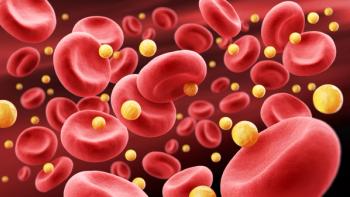
Study Results Assess Neoadjuvant Olaparib/Paclitaxel vs Carboplatin/Paclitaxel
Key Takeaways
- Olaparib plus paclitaxel showed inferior long-term efficacy compared to carboplatin plus paclitaxel in HER2-negative early breast cancer with HRD.
- IDFS was comparable between treatments in patients with g/tBRCA mutations, suggesting potential for olaparib to replace carboplatin in this subgroup.
Long-term data showed no difference in the clinical benefit between the treatments for HER2-negative early breast cancer with homologous recombination deficiency.
The GeparOLA (NCT0278933) phase 2 clinical trial showed no difference in the long-term clinical benefit of olaparib (Lynparza; AstraZeneca) plus paclitaxel (Taxol; Bristol-Myers Squibb Company) combined with epirubicin cyclophosphamide compared with carboplatin plus paclitaxel combined with epirubicin cyclophosphamide as part of a neoadjuvant chemotherapy in patients with human epidermal growth factor receptor 2 (HER2)-negative early breast cancer with homologous recombination deficiency (HRD).
Long-term efficacy endpoints included distant disease-free survival (DDFS), invasive disease-free survival (IDFS), and overall survival (OS), which were numerically inferior with olaparib plus paclitaxel compared with carboplatin plus paclitaxel, according to Peter A. Fasching, MD, a professor in the Department of Obstetrics and Gynecology at the University Hospital Erlangen in Germany, who presented the results at the
IDFS between olaparib plus paclitaxel and carboplatin plus paclitaxel with a g/tBRCA mutation was comparable, he said.
It can therefore be hypothesized that in patients with HER2-negative early breast cancer with HRD who have a g/tBRCA mutation, olaparib might be able to replace carboplatin, and in patients without a g/tBRCA mutation, platinum-containing neoadjuvant chemotherapy might result in a superior outcome, Fasching said.
At a median follow-up of 49.8 months, the 4-year DDFS rate among the 65 patients given olaparib plus paclitaxel was 81.2% compared with 93.4% among the 37 patients who received carboplatin plus paclitaxel. The 4-year IDFS rate was 76% compared with 88.5% and the OS rate was 89.2% vs 96.6 for the olaparib plus paclitaxel combination and the carboplatin plus paclitaxel combination, respectively.
The study included patients with early-stage HER2-negative disease who had HRD-high tumors, defined as a known germline or somatic BRCA1/2 mutation, or a high HRD score via MyChoice assay. Of those enrolled in the study, 96 patients had high HRD scores. Among these patients, 46.2% had a mutation, 43.4% were intact, and 1 was not measurable. In addition, 3 patients had low HRD scores, all of whom had a mutation, while 7 patients had HRD scores that were not measurable.
Patients were randomly assigned 2:1 to receive 80 mg/m2 of paclitaxel weekly plus 100 mg of olaparib tablets twice daily or 80 mg/m2 of paclitaxel weekly plus carboplatin area under the curve 2. Both groups were also given epirubicin/cyclophosphamide at 90 mg/m2 every 2 weeks and 600 mg/m2 every 3 weeks.
Pathological complete response rate, the study’s primary endpoint was previously reported and was 55.1% for olaparib plus paclitaxel and 48.6% for the carboplatin/paclitaxel combination.
Fasching acknowledged that the data need to be interpreted with caution and that the results should be confirmed in a larger clinical trial, saying that GeparOLA was a “small study with a low event rate.”
References
Fasching PA. Neoadjuvant paclitaxel/olaparib in comparison to paclitaxel/carboplatin in patients with HER2-negative breast cancer and homologous recombination deficiency – long-term survival of the GeparOLA study. Presented at: San Antonio Breast Cancer Symposium; Henry B. Gonzalez Convention Center in Texas: December 9, 2022.
Newsletter
Stay informed on drug updates, treatment guidelines, and pharmacy practice trends—subscribe to Pharmacy Times for weekly clinical insights.


















































































































































































































